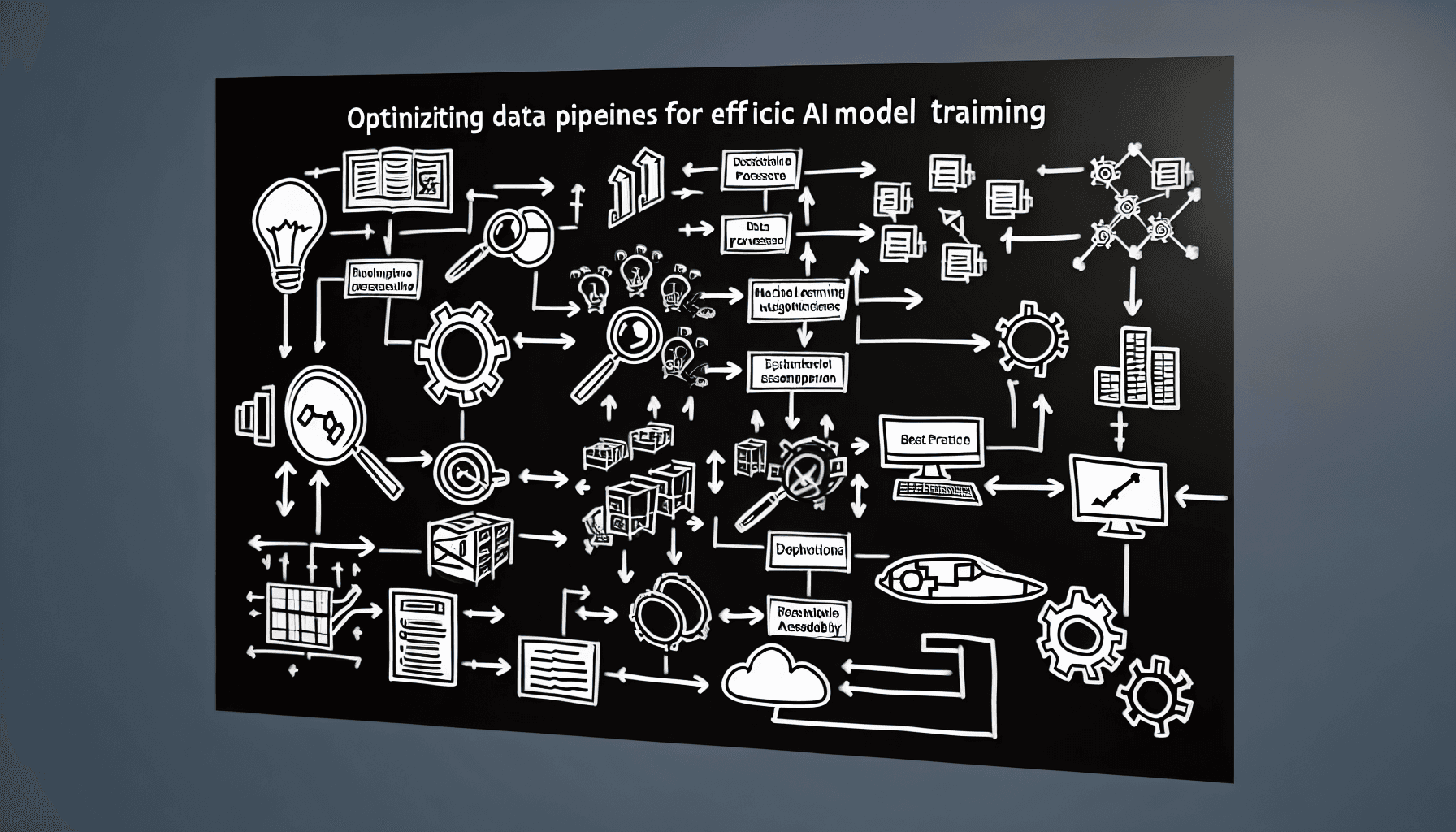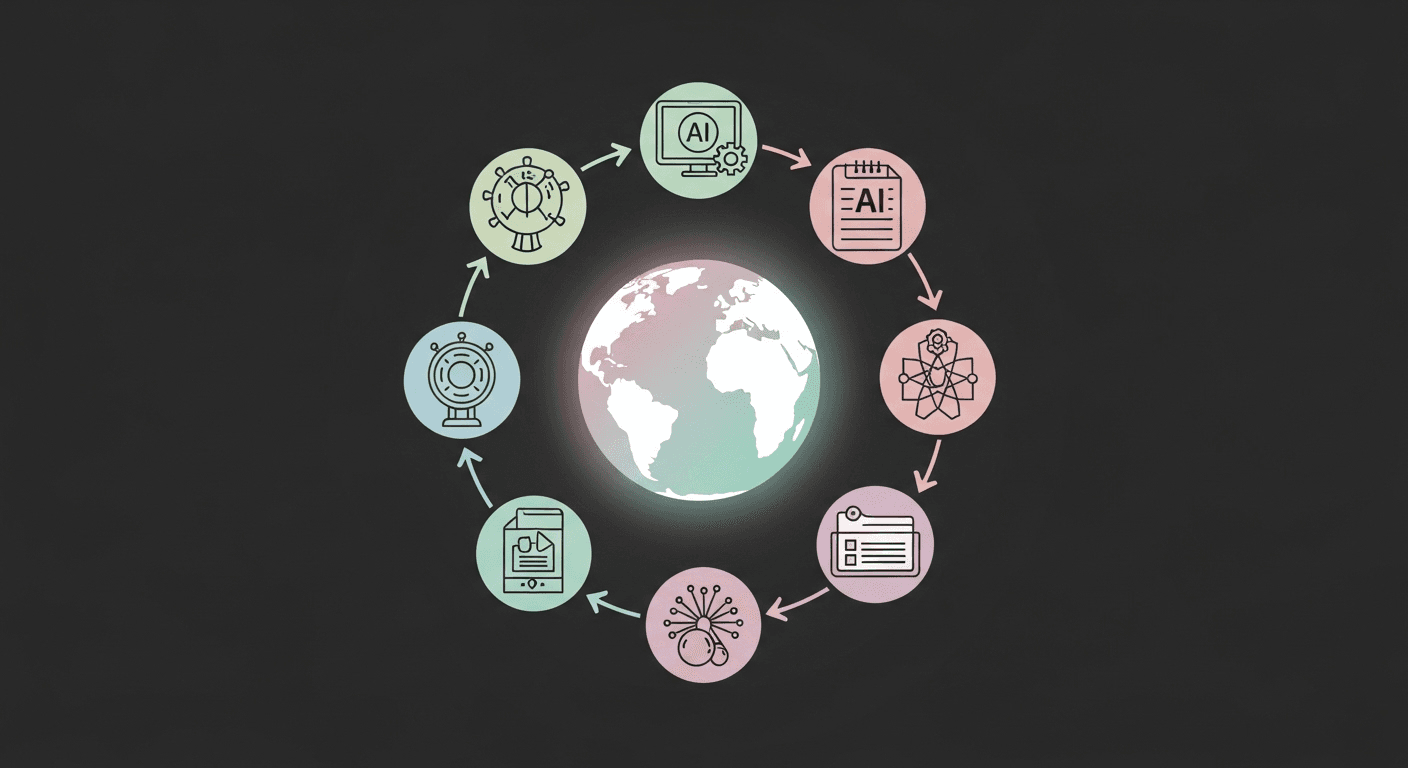Optimizing Data Pipelines for Efficient AI Model Training

Learn how optimized data pipelines are crucial for effectively training AI models, ensuring efficiency and scalability.
Introduction to Data Pipelines
AI models rely on vast amounts of data for training. Effective data pipelines are essential for automating and streamlining the process of data collection, processing, and distribution, ensuring the data quality and availability that these sophisticated models require.
Why Focus on Data Pipelines?
A well-constructed data pipeline not only simplifies data management but also enhances the performance and scalability of AI model training. Key benefits include:
- Increased Efficiency: Automated pipelines reduce manual tasks and errors.
- Improved Data Quality: Systematic processing ensures accuracy and reliability of data.
- Scalability: Pipelines facilitate training larger models with more data.
Key Components of a Data Pipeline
Understanding the components that make up a data pipeline is critical. They include:
- Data Ingestion: Collecting data from various sources.
- Data Processing: Transforming raw data into a usable format.
- Data Storage: Storing data securely and efficiently.
- Data Access: Retrieving data for model training.
Designing a Data Pipeline
The design of a data pipeline depends on several factors, including data volume, source variety, and the specific requirements of the AI model. Here are crucial steps in designing an effective pipeline:
- Identifying Data Sources: Determine where data will come from and how it will be collected.
- Choosing Technology Stack: Select tools and technologies that fit the project’s needs and scale.
- Establishing Data Flow: Define how data moves through the system.
- Implementing Data Processing Steps: Develop processes to clean, transform, and prepare data.
Challenges in Building Data Pipelines
Creating a data pipeline comes with its set of challenges which can include data heterogeneity, scaling issues, and maintaining real-time processing capabilities. Strategies to overcome these include using scalable cloud services, embracing microservices architectures, and applying continuous integration/continuous deployment (CI/CD) practices.
Best Practices for Data Pipeline Optimization
To maximize the effectiveness of your data pipelines, adhere to these best practices:
- Data Governance: Implement policies for data quality and security.
- Monitoring and Logging: Continuously track pipeline performance to identify and address issues promptly.
- Modularity: Design pipelines to be easily adjustable to changes in data or business requirements.
Tools and Technologies
Several tools and technologies facilitate efficient data pipelines. These include data integration tools like Apache Nifi and Talend, cloud platforms such as AWS, Google Cloud, and Azure, and specialized frameworks like TensorFlow and PySpark for handling large-scale data processing and AI model training.
Real-World Applications and Case Studies
Examining real-world examples underlines the critical role of data pipelines in AI applications. Case studies from various industries such as finance, healthcare, and e-commerce illustrate different approaches to pipeline architecture and deployment, providing practical insights and proven strategies.
Conclusion
Developing an efficient data pipeline is crucial for the success of AI initiatives. By understanding the fundamental aspects of pipeline design, embracing best practices, and utilizing the right tools, organizations can ensure their AI models are trained effectively, leading to more accurate results and better performance.
Thank You for Reading this Blog and See You Soon! 🙏 👋
Let's connect 🚀
Latest Blogs
Read My Latest Blogs about AI

Sacks vs. Anthropic: The High-Stakes Battle Over AI Regulations, Regulatory Capture, and California’s SB53
White House adviser David Sacks accuses Anthropic of manipulating AI rules. We explore SB53, the regulatory capture debate, and its implications for startups and federal policy.
Read more


